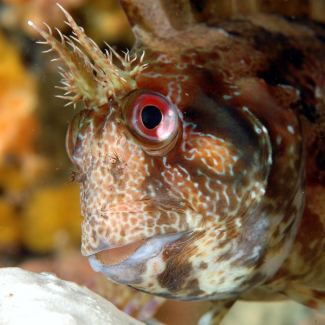
A supergene to stay alive
Some butterflies rely mainly on colorful wing patterns for their survival. CNRS researchers from the Centre d'Écologie Fonctionnelle et Évolutive (CNRS / University of Montpellier / Paul-Valéry University / EPHE-PSL / IRD), together with British and American teams, studied the genomes of dozens of tropical Heliconius numata butterflies to understand how such diversity in color motifs has come about. And they believe they have found the key to this variety: a supergene that arose two million years ago by hybridization and has been passed down through the generations. Their findings are published in Current Biology (May 24, 2018).
Butterflies studied by scientists apply adaptive strategies to escape predators. They use mimicry, displaying the same colors and patterns as various toxic butterflies, so that predators think they are inedible. Hence those most resembling toxic butterflies have an advantage, which their descendants inherit.
In the wild, however, sexual reproduction results in genetic recombination, whereby each individual receives a unique subset of its parents' shuffled chromosomes. This subset constitutes its genome, the repository of genetic information. Logic dictates that when two differently patterned butterflies breed, genetic recombination ought to yield offspring that do not closely resemble them but instead display a blend of their traits. We would expect to see a gradual divergence in appearance from toxic butterflies across the generations.
But that's not what happens with Heliconius. The researchers discovered a "supergene” resulting from hybridization of a Heliconius numata butterfly and a member of another species, two million years ago. The supergene itself consists of twenty genes that are inseparable, like the contents of a locked suitcase. Transmitted from generation to generation, they are responsible for the wing characteristics mimicking those of toxic look-alikes. A rearranged chromosome acquired during the ancestral hybridization event, resistant to recombination, underlies this original genetic architecture.
This discovery helps explain how supergenes are formed and may shed light on the adaptive strategies of other species. It also reveals a mechanism for preventing recombination while still allowing for genetic evolution. Hybridization thus provides a key to understanding processes of adaptation.

Heliconius numata silvana. This variety probably looks like what Heliconius numata did two million years ago when the supergene arose.

Heliconius pardalinus. This species possesses the rearranged chromosome it transmitted to Heliconius numata (Fig. 1) through hybridization, which gave rise to the original supergene.
Jay P, Whibley A, Frezal L, Rodríguez de Cara MÁ, Nowell RW, Mallet J, Dasmahapatra KK, Joron M. Supergene Evolution Triggered by the Introgression of a Chromosomal Inversion. Curr. Biol. 2018. doi: 10.1016/j.cub.2018.04.072.

